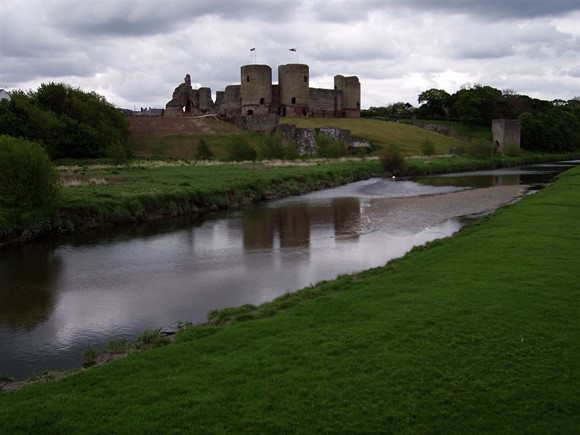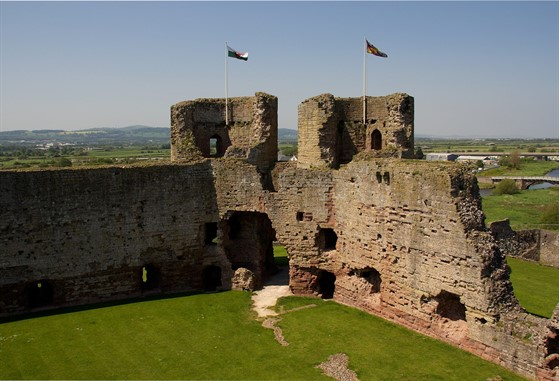Posted on 16/08/2017 by David
Wales is home to a spectacular array of medieval castles; in fact there are no less than 600 fortresses scattered across the country - that's more per square mile than any other country in the world!
The castles of North Wales are amongst the most well-preserved in Europe, each one with a fascinating story of invasion, rebellion and revenge to tell.
So far in this brand new blog series we've visited Criccieth Castle on the Llyn Peninsula and this week we head east to the lesser known, but equally impressive, Rhuddlan Castle. Unlike coastal Criccieth, Rhuddlan is situated inland, occupying a strategically important location at the mouth of the Vale of Clwyd, close to the English border with Cheshire. In theory, nothing and no one went in - or out - of Norman Wales without the garrison of Rhuddlan knowing about it.
Like its brothers-in-arms, the castles of Conwy and Caernarfon, it formed part of the ‘Ring of Iron’ built for English king, Edward I, to control and intimidate the Welsh. A visit to a castle is a highlight of any holiday to North Wales but for the native Welsh they are a constant reminder of conquest and subjugation.
Today, the castles live in peace with the people and are cared for by Cadw, the custodians of Welsh heritage. Cadw work tirelessly to maintain these important historical monuments for generations to come, despite their turbulent history.
Because of its important geographical location, on the shores of the River Clwyd halfway between the coast at Rhyl and the tiny cathedral city of St Asaph, the site at Rhuddlan was a prize fought over by the Welsh and the English in many years of battle and bloodshed.

A fortified building had occupied the fording place across the river at Rhuddlan as early as the 8th century, to be replaced by a motte-and-bailey castle by the conquering Normans in the 11th. It wasn't until the late 13th century that the castle we see today was constructed.
Edward's loyal castle builder, Master James of St George, undertook the construction of Rhuddlan - which comprised of the stone castle and new town. Work started in 1277 and was completed by 1282, the second of Edward's Ring of Iron, after the castle at Flint.
What makes Rhuddlan special is its design. It was the first of Edward’s castles to follow a concentric pattern, essentially a castle with two sets of curtain walls, inner and outer. Imagine 'walls within walls' and a castle resembling a diamond or a hexagonal in shape. This was a massive departure from the traditional square-shaped 'keep' castle but ensured the weakest parts of the building - its corners - were protected by towers.
Edward needed access to the sea to keep the castle supplied, so he enlisted almost 2,000 ditchers to divert the River Clwyd closer to the castle, moving it more than two miles to create a deep channel for his ships. Clever, eh? You can still see the remains of the defensive river gate.
The Statute of Rhuddlan was passed here in 1284, a move which introduced the English common-law system to Wales. If you take through the village of Rhuddlan, you can still see the government building on the corner of High Street and Parliament Street.
In 1294, the Welsh under Madog ap Llywelyn attempted to regain control of Rhuddlan but failed, and in 1400 the indomitable Owain Glyndwr sacked the town but also failed to take the castle. Rhuddlan begins to fade from the spotlight following the Welsh Revolts of the fifteenth century; it played a small part in the Civil War as a Royalist stronghold and was partially demolished by the Roundheads in in 1648 to prevent its further use.

Once you’ve had your fill of exploring the castle, head down into the village itself. It’s fairly quiet there these days, but that makes it perfect to walk the streets that are set out identically to Edward’s plan. The landscape around the castle and town is fairly flat when compared to the rest of Wales, making it an ideal spot for walkers.
Next time, we invite you to explore our first truly Welsh castle - Dolbadarn in Llanberis.
Images courtesy: Rhuddlan Castle Ruins by Mike Peel via Wikimedia Commons. Rhuddlan Castle viewed from the bridge over the Clwyd by Clint Heacock via Wikimedia Commons.

